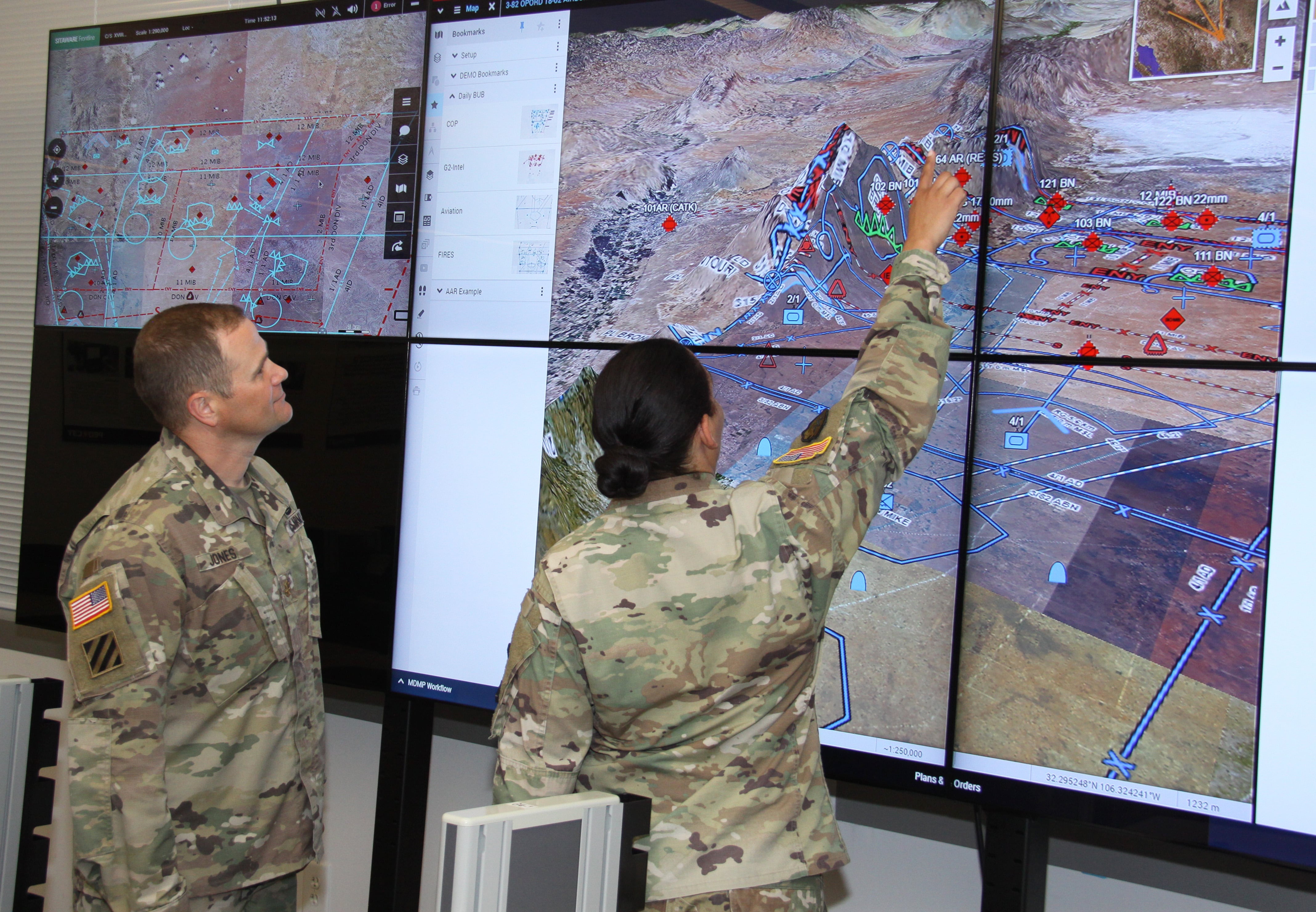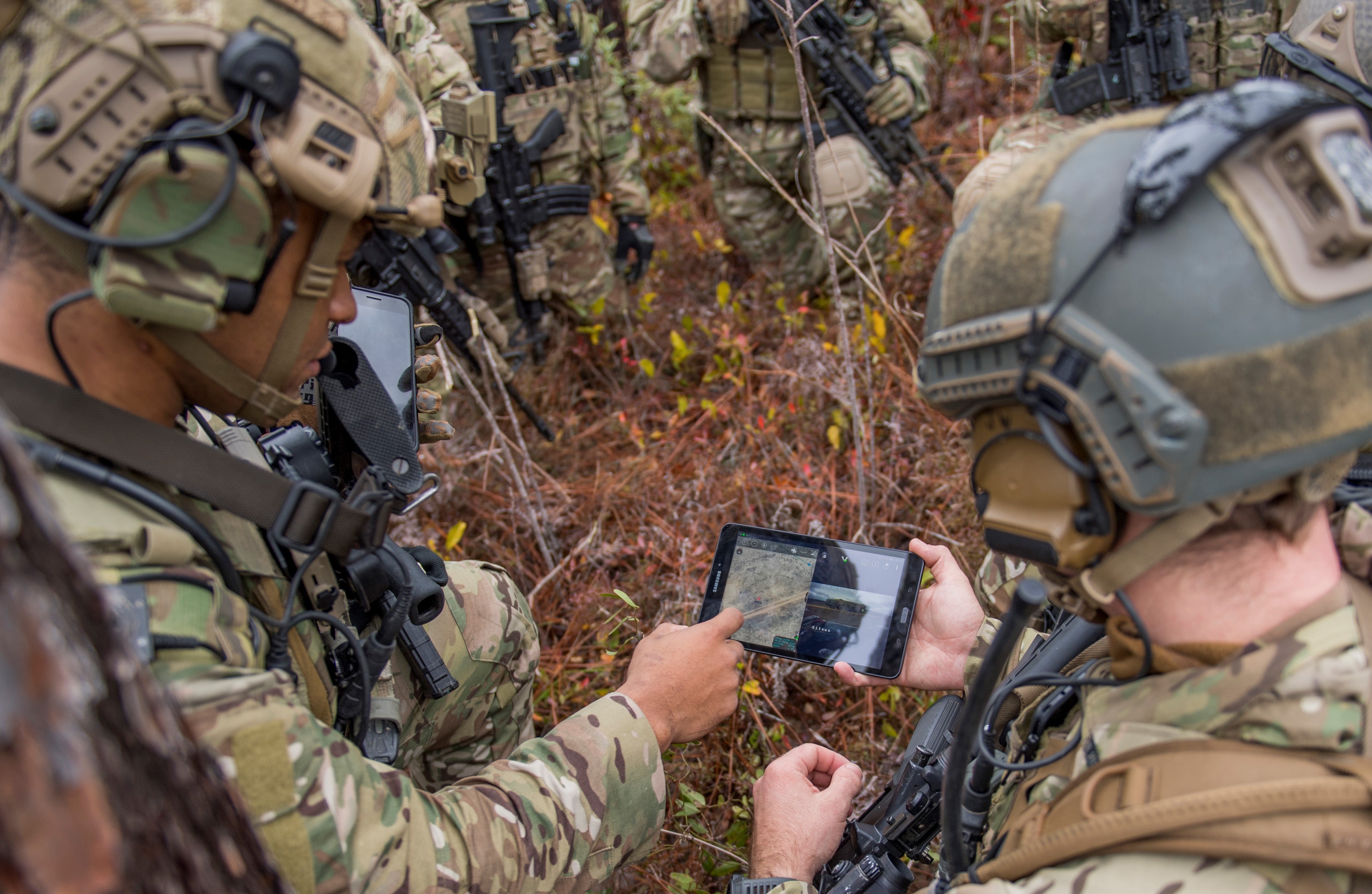The United States’ comparative military advantage has eroded significantly as the technologies that helped sustain its primacy since the Cold War have proliferated to great power and regional competitors such as China, Russia, North Korea, and Iran. They have evolved their capabilities and operational approaches to negate and otherwise avoid traditional American warfighting strengths. The United States is highly unlikely to regain its competitive advantage through like-for-like replacements of its legacy platforms with incremental improvements while remaining beholden to industrial age notions of warfare focused on individual weapon systems focused on inflicting attrition.
Instead, future success demands that the U.S. military embrace a new approach. Advancements in computing and information technology hold the potential to radically transform how military forces attain desired effects, where success depends foremost on the speed and integration of information. By harnessing information technologies to promote the rapid and seamless exchange of information across platforms, domains, services, and even coalition partners, commanders can make faster decisions and better integrate actions across domains. In such a manner, we can enable friendly forces to operate inside the adversary’s decision-making cycle and impose multiple, simultaneous dilemmas that collectively confound and paralyze an adversary’s ability to respond. To put it simply — it comes down to understanding the battlespace to know when and where to position forces to maximize their effectiveness, while minimizing vulnerabilities.
RELATED

Realizing this future vision of combat, however, faces challenges given legacy command and control (C2) systems and processes currently in use that were not designed for the speed and complexity that information age all-domain operations demand. Overcoming these constraints will require not just material changes involving technology, but also a shift in how the role of networks and information systems are perceived relative to weapons and platforms. Recognizing this, military leaders are pursuing joint all-domain command and control (JADC2) as the guiding construct to address these challenges. Undeniably an ambitious undertaking, the success of JADC2 will ultimately depend upon having a champion at the top of the Department of Defense that will guide the modernization of related policy, acquisition, and concepts of operations toward a common goal that all relevant stakeholders can understand and accept as the desired way forward.
Progress to date
Although U.S. forces can presently conduct multi-domain operations, current practices are far from what will be required when facing advanced adversaries. Each service branch and coalition partner organize, train, and equip their own forces, which joint force commanders then stitch together in a federated “joint and combined” employment construct. This ensures that military personnel and their communications and weapon systems can work together in a synchronized fashion. In other words, the services tend to develop their capabilities in a stand-alone manner focused around their primary operating domain without an overarching construct to ensure joint or allied partner interoperability. This often leads to strategies focused on deconfliction versus collaborative partnership or the interdependence required to achieve force multiplying effects with available resources. As a result, the employment of these capabilities is at best additive, rather than complementary where each one enhances the effectiveness of the whole, while compensating for the vulnerabilities of other assets, optimizing the force’s overall capacity for dynamic exploitation of opportunities.
The good news is the services agree that data is the principal currency of future warfare and that leveraging data through a network that connects forces across both domains and services to seamlessly collect, process, and share data will provide an asymmetric advantage in future conflicts. The bad news is that the services are pursuing a number of individual, stove-piped efforts aligned with their own distinct requirements. The development of concepts such as Multi-Domain Operations, Multi-Domain Command and Control, Distributed Maritime Operations, and Expeditionary Advanced Base Operations, as well as their associated capabilities such as the Cooperative Engagement Capability and the Integrated Air and Missile Defense Battle Command System, have been sporadic and uncoordinated, consisting of dozens of programs being developed independently and lacking a coherent vision to align mission requirements and reconcile gaps or redundancies.
To better streamline and synchronize these efforts under the JADC2 banner, the joint staff and the Office of the Secretary of Defense created a joint cross-functional team including representatives from the offices of the DOD Chief Information Officer, the Under Secretary of Defense for Research & Engineering, and the Under Secretary of Defense for Acquisition & Sustainment. This body is charged with bringing the services together to develop the JADC2 construct by identifying gaps and requirements, enhancing experimentation collaboration, and recommending resource allocation for both materiel and non-materiel C2 capability improvements, while also being mindful of the distinct capabilities inherent in each service and government security organization.

At the same time, the Secretary of Defense has tasked the joint staff to deliver a warfighting concept that outlines how the U.S. military plans to fight in the future — a much needed update to existing joint concepts that are becoming increasingly outdated. By describing the capabilities and attributes necessary to fight effectively in the future operating environment—including for JADC2 — this concept will inform the requirements that are produced by the joint requirements oversight council and pushed out to the services.
This top-down guidance is critical to help inform bottom-up technological development and experimentation. Although each of the services has been active developing related technologies, the Air Force has taken the rare step of volunteering to lead JADC2′s development as a joint function. Currently, these efforts center on the Advanced Battle Management System — essentially a “combat cloud” to connect any sensor with any shooter across all domains—that the Air Force is using as its technical engine for enabling JADC2. To help field new capabilities as fast as possible and cultivate broader buy-in, the Air Force is partnering with the other services to conduct small-scale field demonstrations scheduled for every four months. The first experiment was completed in December 2019, which connected Air Force aircraft, Space Force sensors, Navy surface vessels and aircraft, Army air defense and fire units, and a Special Operations Team with incompatible data and communications systems to defeat a simulated cruise missile.
These efforts are intended to develop both the architecture and the technologies required to implement JADC2. As currently envisioned, ABMS includes six key “product categories” and 28 specific “product lines” the Air Force intends to develop over time. Underpinning all these efforts is digital engineering, open architecture, and data standards that allow all the disparate elements to ‘snap’ together.
Obstacles remain
Despite encouraging progress and widespread agreement of the necessity for JADC2 across the services and other relevant defense agencies in the DOD, significant obstacles remain before its full potential can be realized.
Foremost among these challenges, current organizational structures and service cultures do not align well with JADC2′s emphasis on employing assets in service- and domain-agnostic ways that entail dynamically connecting sensors and shooters across domains and enabling multiple, rapid shifts in supporting/supported relationships. Specifically, JADC2 raises difficult questions regarding who has decision authority and risk acceptance. Although joint force commanders exercise operational control over joint forces and are tasked to maintain conditions for joint force success, the subordinate command structure tends to exacerbate military service and domain stovepipes that are resistant to ceding control over their assets. Similar frictions are likely to extend beyond a single combatant command, particularly in terms of integrating space and cyberspace capabilities, which have their own functional combatant commands.
Of course, this assumes U.S. forces eventually reach a level of integration that makes resolving such relevant operational authorities necessary. The current service-based model for systems development and acquisition is not optimal for achieving the level of interdependency that JADC2 envisions. Given the complexity and number of programs likely to be affected by ABMS, the Air Force created the position of chief architect to ensure it acquires the right mix of capabilities in a coherent manner. However, the authority of that position does not extend to the other services, which are likely to focus on their own specific operating requirements as they fund and develop their components of JADC2′s technical architecture.
Furthermore, ABMS technical demonstrations focused on connectivity have thus far outpaced development of the operational concepts it is intended to support. Consequently, JADC2 risks over-emphasizing communications and ubiquitous connectivity at the expense of effective battle management. This could have several deleterious implications for future operations. First, it could exacerbate the tendency of senior commanders to centralize control, usurping tactical level decisions. Second, the desire to push as much information as possible forward to the tactical edge could overwhelm warfighters, resulting in operational paralysis or chaos. Third, it could result in unrealistic communications demands, particularly in a conflict with China or Russia or their proxies where the United States’ exploitation of the electromagnetic spectrum will be fiercely contested.
Lastly, given the enormous financial investment JADC2 entails, maintaining stable funding will present a continual challenge due to both the likely downward pressure on the defense budget resulting from the COVID-19 epidemic and because it is challenging to cultivate a constituency on Capitol Hill for ethereal “connections” and “data” compared to more tangible platforms, some of which the Air Force defunded in its latest budget proposal in part to fund further development of ABMS. Furthermore, JADC2 is likely to face ongoing scrutiny because the nature of the program does not lend itself to traditional methods of evaluation, as evidenced by the Government Accountability Office’s recent report that was highly critical of ABMS.
The path forward
Navigating these challenges requires the highest level of direction from the Office of the Secretary of Defense, and centralized, OSD-level management along the lines of the recently formed joint cross-functional team to champion overall JADC2 development. Using a DOTMILPF-P (doctrine, organization, training, materiel, interoperability, logistics, personnel, facilities, & policy) approach, the primary goal of this group should be to define a “template” to guide modernization policy, acquisition, and concepts of operation. The United States requires the distinct capabilities inherent in its separate military services and other defense agencies. However, they must be bound by a common vision for employing joint and combined forces, as well as an overarching strategy to realize the JADC2 concept. The United States cannot risk boutique solutions that do not integrate in a seamless, mutually reinforcing fashion. To achieve this, the OSD-level group must pursue four critical lines of effort: 1) establish standards and continuity so individual programs integrate within the greater JADC2 enterprise and secure desired outcomes in a timely fashion; 2) support effective programs and help them to maintain momentum and protection from competing bureaucratic interests; 3) engage across the military services and DOD agencies to respond to combatant command warfighting requirements, while also holding participating entities accountable; and 4) ensure industry is fully integrated into appropriate JADC2 development.
If properly executed, JADC2 promises to provide commanders with “decision advantage” by allowing them to gather, process, exploit, and share information at the speed and scale required to defeat potential adversaries. At the same time, allowing joint and combined forces to distribute access to relevant information more widely, JADC2 must also enable new, more flexible command and control techniques that empower subordinate elements to effectively act when they become isolated.
The ability to leverage capabilities across a network through the seamless and ubiquitous sharing of information could also ease requirements for systems that are currently expected to operate independently. The complexity inherent to this approach of overloading requirements on a given program drives lengthy development cycles, time and cost overruns, and delays in capability. Instead, by leveraging numerous redundant function options through a combat cloud, individual systems could focus on narrower requirements where their capability can be maximized while also minimizing cost and technical risk.
Change will not come easy, particularly given how successful the United States has been using the traditional combined arms approach. However, such complacency could be disastrous, given that critical information technology advances are often measured in days, potentially enabling competitors with less dominant industrial combat means to leapfrog past legacy military concepts by investing in newer information technologies and capabilities. The United States’ efforts to harness information are not being pursued in a vacuum—America’s adversaries are pursuing similar concepts. JADC2 may be ambitious, but it is also imperative to gain a competitive advantage to deter and, if necessary, defeat those potential adversaries.
Retired Air Force Lt. Gen. David Deptula served as a joint task force commander for air operations over Iraq and Afghanistan, planned the Desert Storm air campaign, has more than 3,000 flying hours, and is now dean of the Mitchell Institute for Aerospace Studies and a senior scholar at the Center for Character and Leadership Development at the U.S. Air Force Academy.







